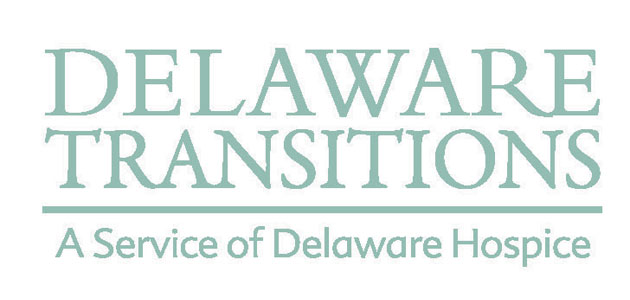Make Every Day Count
Helpful information for family caregivers
March/April 2014
In this March/April issue we look at the common older adult problem of getting a good night’s sleep. We also continue our series on talking about assisted living. And because this is tax season, we are offering tips about how to deduct in-home care.
Insomnia in older adults
 Older adults need about seven hours of sleep at night. But they often have difficulty falling asleep and staying asleep. They frequently wake up early and are not able to go back to sleep. This is due in part to normal changes of aging. We just don’t spend as much time in the deep phases of sleep.
Older adults need about seven hours of sleep at night. But they often have difficulty falling asleep and staying asleep. They frequently wake up early and are not able to go back to sleep. This is due in part to normal changes of aging. We just don’t spend as much time in the deep phases of sleep.
But for many older adults—as many as 50 percent—sleep difficulty becomes chronic. It creates emotional distress and fatigue, making it difficult to function well during the day. Moreover, ongoing insomnia has been shown to contribute to depression, anxiety, and dementia. Also, to a greater risk of high blood pressure, heart attack, and diabetes.
Other signs of insomnia include
- daytime sleepiness and fatigue that gets in the way of normal activities
- difficulty concentrating or remembering things
- increased irritability or moodiness
- more-frequent mistakes or accidents
Bring any such symptoms to the doctor’s attention. Beyond insomnia, they may be related to an underlying health issue, such as
- sleep apnea (halted breathing during sleep)
- restless leg syndrome (leg movements during sleep)
Many sleep problems in older adults can be related to a chronic condition, such as diabetes, chronic pain, dementia, or depression. Medications can also be at the root of older adult insomnia.
Ideally, provide the doctor at least a week’s worth of notes about your relative’s daytime and nighttime sleep habits. Also bring information about health and current medications (both prescribed and over the counter). Sometimes an overnight sleep study is needed to determine the cause of the insomnia and pinpoint the most appropriate treatment.
Depending on the cause, the doctor may suggest your relative change sleep-related routines. They may also suggest cognitive behavioral therapy. This will teach your loved one to recognize and interrupt the thoughts that contribute to insomnia. Medications may be prescribed. But these are problematic for older adults. They can increase the risk of falls. They can also pose conflicts with other medications and even become addictive.
Return to topTalking about assisted living
Raising this sensitive topic requires patience and compassion on your part. Prepare ahead of time. The best approach is several small conversations over many months. This gives your parent time to adjust emotionally.
Before you talk, listen and observe
- What worries does Mom express? Fatigue doing chores? Problems getting out and about? Loneliness?
- What do you observe physically? Is there food in the refrigerator? Any changes in housekeeping habits or personal hygiene? Forgetting to take medications?
Ask questions. Learn what your loved one already has in mind and start with those options if at all possible. You will get less resistance long term if you show you honor your relative’s priorities.
Ease into the conversation with stories. For example, describe a situation with a friend, or an article you read. Concentrate on the positives related to your loved one’s concerns, without pushing your agenda.
- “My coworker’s mother moved into an assisted living community. Now her mom is liberated from basic chores and gets to focus on the things she enjoys doing. Just like college. She LOVES it!”
Speak from your perspective. Unless there are significant memory problems, always acknowledge that your parent is still in charge of his or her own life.
- “I’m concerned about your health and safety, Dad. I notice [***concrete example***]. It worries me. Do me a favor, please. Let’s explore some options for getting you some help.”
If you encounter resistance, back off. Arguing or trying too hard to persuade can be counterproductive.
Bring in an objective third party, if needed. If safety or dementia is a factor, a professional geriatric care manager can provide insight that is not influenced by family history or politics. These professionals understand elders and are even trained to lead family meetings so everyone can get on the same page.
Return to top
Tax breaks for in-home care
At tax time, our thoughts naturally turn toward deductions. What might count as a medical expense for your ill older relative?
With elders, there’s a fine line between health care and personal care. Perhaps your loved one needs some help getting up from a chair. Or perhaps he or she can no longer put together a meal. These situations create safety and health risks. But medical deductions typically cover only the costs of highly skilled providers. Personal tasks such as these don’t require a registered nurse!
Fortunately, the IRS now recognizes that personal care is a health issue for many individuals. As such, in-home care can be deducted as a medical expense under specific conditions.
The first step is to obtain a letter from a licensed health professional. From a doctor or nurse practitioner, for example. The letter must certify that in the past 12 months your loved one either
- has had a chronic condition that for 90 days or more required assistance with at least two activities of daily living. Activities of daily living are typically intimate tasks such as bathing, eating, and going to the bathroom. Also, dressing and getting up or down from a chair or bed. Or
- has required substantial assistance because of “cognitive impairment.” This means that your loved one has a condition that affects memory, thinking, or judgment. Without a helper there most of the time, the person could easily get hurt or lost.
To be deducted, the sum total of medical expenses, including for personal care, must amount to at least 7.5% of adjusted gross income if your loved one is 65 or older or 10% if he or she is younger than 65.
Having help at home can be expensive. But the costs may be tax deductible. Check with your CPA to confirm that your loved one’s care situation meets all the eligibility requirements.
Return to top

